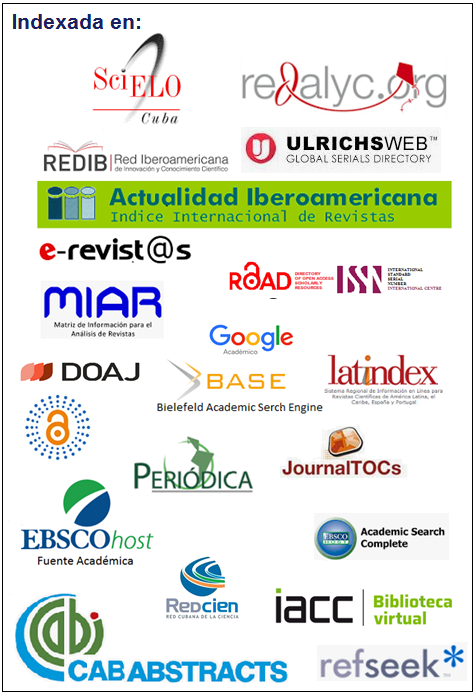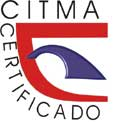Characterization of cobalt (III) oxides precipitation reactions in presence of the air
Keywords:
precipitation, cobaltAbstract
This paper presents the reactions of precipitation of cobalt (III) oxide, substance which is employed in the nickel industry and the purification of the industrial liquors. For doing this research the air is employed as oxidant agent, regulating environmental pH with hydroxide of sodium, carbonate of sodium and the mixture of both, doing the thermodynamic analysis for determining its spontaneity in the interval of temperatures from 303 to 353 K. The values were calculated in the variation of free energy and the constants of equilibrium to the given, according to the method proposed by Criss and Cobble. In each proposed reactions are studied the behavior of pH is the course of time and it is determined the percentage of the product submission obtained. The percentage of total cobalt in form cobalt (III) are determine. Those solids were characterized by diffraction of X rays. From the studied reactions only is possible to reach the derived product in that one that is used hydroxide of sodium as basic reagent (reaction I), obtaining a percentage of submission higher than 93 %.Downloads
Download data is not yet available.
Published
2001-10-10
How to Cite
Danguillecourt-Álvarez, E., Hernández-Pérez, Y., Fiffe-Muguercia, L. J., & San Felix-Prieto, M. (2001). Characterization of cobalt (III) oxides precipitation reactions in presence of the air. Minería & Geología, 18(3-4), 5. Retrieved from https://revista.ismm.edu.cu/index.php/revistamg/article/view/224
Issue
Section
Articles
Copyright & Licensing
- Authors retain copyright and guaranteeing the right magazine to be the first publication of the work as licensed under a Creative Commons Attribution-NonCommercial that allows others to share the work with an acknowledgment of the work's authorship and initial publication in this journal.
- Authors may establish separate supplemental agreements for the exclusive distribution version of the work published in the journal (eg, place it in an institutional repository or publish it in a book), with an acknowledgment of its initial publication in this journal.
- Authors are allowed and recommended to disseminate their work through the Internet (e.g., in institutional telematic archives or on their websites) before and during the submission process, which can produce interesting exchanges and increase citations of the published work. (See The effect of open access)



